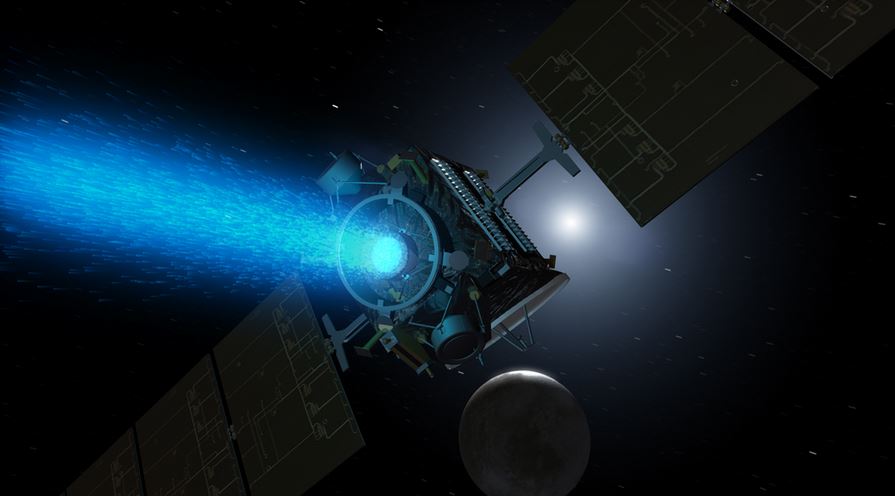NASA’s Dawn spacecraft is now in orbit around the dwarf planet Ceres, marking a milestone in space exploration. It is the first time a spacecraft orbits a dwarf planet. Dawn was captured by Ceres’ gravity at a distance of 61,000 kilometers (38,000 miles) on Friday at 4:49am PST.
Mission controllers at NASA’s Jet Propulsion Laboratory (JPL) in Pasadena, California, received a message at 5:56am PST from the probe that all was fine and it was thrusting its ion engine, signaling that it was in orbit as planned.
JPL’s Chief Engineer and Mission Director, Marc Rayman, said:
“Since its discovery in 1801, Ceres was known as a planet, then an asteroid and later a dwarf planet. Now, after a journey of 3.1 billion miles (4.9 billion kilometers) and 7.5 years, Dawn calls Ceres, home.”

This image of Ceres was taken by NASA’s Dawn spacecraft on March 1, 2015, just a few days before the mission achieved orbit. (Image: NASA JPL)
The Dawn spacecraft now has two firsts under its belt:
1. It is the first spacecraft ever to orbit two different extraterrestrial targets. In 2011-2012 it explored Vesta, a huge asteroid, from which it sent thousands of images back to Earth.
2. It is the first probe to visit a dwarf planet (Ceres).
The asteroid belt
Vesta and Ceres are located in the asteroid belt, a region of our Solar System that orbits the Sun between the planets Mars and Jupiter. It consists of numerous irregularly-shaped bodies called asteroids and minor planets.
Ceres and Vesta are the largest bodies in the asteroid belt. With a diameter of 590 miles (950 kilometers), Ceres represents about one-third of the asteroid belt’s mass. Ceres’ surface area is approximately equal to the land area of Argentina or India.
Dawn’s approach to Ceres has been via its dark side, that is why the most recent photographs it has sent to Earth (on March 1) show the dwarf planet as a crescent. It won’t come round to Ceres’ sunny side until mid April.
When Dawn emerges on the light side of Ceres, scientists will receive amazingly sharp images as the spacecraft spirals to closer orbits.
Lead investigator of the Dawn mission at the University of California, Los Angeles (UCLA), Chris Russell. said:
“We feel exhilarated. We have much to do over the next year and a half, but we are now on station with ample reserves, and a robust plan to obtain our science objectives.”

This artist’s concept of the Dawn spacecraft. It travels through space using ion propulsion – ions are accelerated out of an engine, giving the spacecraft thrust. The xenon ions glow with blue light. (Image: Jet Propulsion Laboratory)
The bright lights mystery
NASA scientists, astronomers worldwide, and millions of lay people are waiting for more information on the mysterious bright lights seen on a picture of Ceres that Dawn sent back to Earth in February.
Hopefully, now that the probe is much nearer, we may find out what they are. They are quite close to each other, and are located in a large crater on the surface of the dwarf planet.
Scientists believe they could be the result of collisions that exposed some of the material that lies under the surface, or maybe they are plumes of ice volcanoes. Alien enthusiasts have other imaginative theories.
Scientists believe there is water on Ceres, which raises the question of whether life may exist (or may have existed) there. Discussions on the possibility of microbial extraterrestrial life on Ceres are not common, compared to the potential on Mars, Titan or Europa.
Video – Dawn Ceres Arrival

